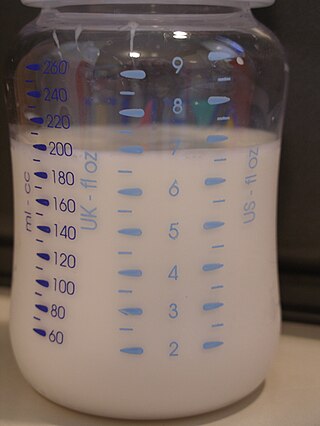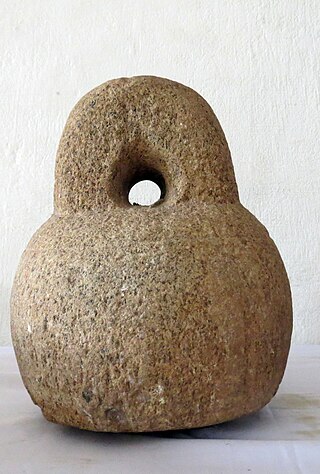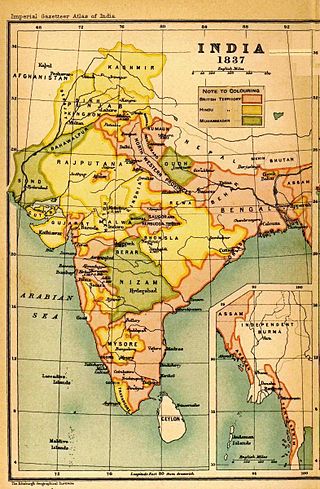Related Research Articles

The pound or pound-mass is a unit of mass used in both the British imperial and United States customary systems of measurement. Various definitions have been used; the most common today is the international avoirdupois pound, which is legally defined as exactly 0.45359237 kilograms, and which is divided into 16 avoirdupois ounces. The international standard symbol for the avoirdupois pound is lb; an alternative symbol is lbm, #, and ℔ or ″̶.

United States customary units form a system of measurement units commonly used in the United States and most U.S. territories, since being standardized and adopted in 1832. The United States customary system developed from English units that were in use in the British Empire before the U.S. became an independent country. The United Kingdom's system of measures was overhauled in 1824 to create the imperial system, which was officially adopted in 1826, changing the definitions of some of its units. Consequently, while many U.S. units are essentially similar to their imperial counterparts, there are noticeable differences between the systems.
The ounce is any of several different units of mass, weight, or volume and is derived almost unchanged from the uncia, an Ancient Roman unit of measurement.

The cubit is an ancient unit of length based on the distance from the elbow to the tip of the middle finger. It was primarily associated with the Sumerians, Egyptians, and Israelites. The term cubit is found in the Bible regarding Noah's Ark, the Ark of the Covenant, the Tabernacle, and Solomon's Temple. The common cubit was divided into 6 palms × 4 fingers = 24 digits. Royal cubits added a palm for 7 palms × 4 fingers = 28 digits. These lengths typically ranged from 44.4 to 52.92 cm, with an ancient Roman cubit being as long as 120 cm.

The foot is a unit of length in the British imperial and United States customary systems of measurement. The prime symbol, ′, is commonly used to represent the foot. In both customary and imperial units, one foot comprises 12 inches, and one yard comprises three feet. Since an international agreement in 1959, the foot is defined as equal to exactly 0.3048 meters.
The long ton, also known as the imperial ton or displacement ton, is a measurement unit equal to 2,240 pounds (1,016.047 kg). It is the name for the unit called the "ton" in the avoirdupois system of weights or Imperial system of measurements. It was standardised in the 13th century. It is used in the United Kingdom and several other Commonwealth of Nations countries alongside the mass-based tonne defined in 1799, as well as in the United States for bulk commodities.

A unit of length refers to any arbitrarily chosen and accepted reference standard for measurement of length. The most common units in modern use are the metric units, used in every country globally. In the United States the U.S. customary units are also in use. British Imperial units are still used for some purposes in the United Kingdom and some other countries. The metric system is sub-divided into SI and non-SI units.
The batman was a unit of mass used in the Ottoman Empire and among Turkic peoples of the Russian Empire. It has also been recorded as a unit of area in Uyghur-speaking regions of Central Asia. The name is Turkic, but was also sometimes used for the equivalent unit in Persia. The equivalent unit in British India was anglicized as the maund. The value of the batman varied considerably from place to place.
English units were the units of measurement used in England up to 1826, which evolved as a combination of the Anglo-Saxon and Roman systems of units. Various standards have applied to English units at different times, in different places, and for different applications.

The earliest recorded systems of weights and measures originate in the 3rd or 4th millennium BC. Even the very earliest civilizations needed measurement for purposes of agriculture, construction and trade. Early standard units might only have applied to a single community or small region, with every area developing its own standards for lengths, areas, volumes and masses. Often such systems were closely tied to one field of use, so that volume measures used, for example, for dry grains were unrelated to those for liquids, with neither bearing any particular relationship to units of length used for measuring cloth or land. With development of manufacturing technologies, and the growing importance of trade between communities and ultimately across the Earth, standardized weights and measures became critical. Starting in the 18th century, modernized, simplified and uniform systems of weights and measures were developed, with the fundamental units defined by ever more precise methods in the science of metrology. The discovery and application of electricity was one factor motivating the development of standardized internationally applicable units.

Both the British imperial measurement system and United States customary systems of measurement derive from earlier English unit systems used prior to 1824 that were the result of a combination of the local Anglo-Saxon units inherited from Germanic tribes and Roman units.
The pao is a unit of dry measure (mass) which is used in South Asia. The name may come from the Punjabi ਪਾਓ páo, which was a traditional charge of one quarter of a seer per every maund of grain that was weighed, converted into a tax by Sawan Mal. Turner also cites a Sindhi word pāu (پاءُ) meaning a quarter of a seer.

The maund, mun or mann is the anglicized name for a traditional unit of mass used in British India, and also in Afghanistan, Persia, and Arabia: the same unit in the Mughal Empire was sometimes written as mann or mun in English, while the equivalent unit in the Ottoman Empire and Central Asia was called the batman. At different times, and in different South Asian localities, the mass of the maund has varied, from as low as 25 pounds (11 kg) to as high as 160 pounds (72 kg): even greater variation is seen in Persia and Arabia.

A Seer is a traditional unit of mass and volume used in large parts of Asia prior to the middle of the 20th century. It remains in use only in a few countries such as Afghanistan, Iran, and parts of India although in Iran it indicates a smaller unit of weight than the one used in India.
Before the introduction of the Metric system, one may divide the history of Indian systems of measurement into three main periods: the pre-Akbar's period, the period of the Akbar system, and the British colonial period.

The candy or candee, also known as the maunee, was a traditional South Asian unit of mass, equal to 20 maunds and roughly equivalent to 500 pounds avoirdupois (227 kilograms). It was most used in southern India, to the south of Akbar's empire, but has been recorded elsewhere in South Asia. In Marathi, the same word was also used for a unit of area of 120 bighas, and it is also recorded as a unit of dry volume.

The imperial and US customary measurement systems are both derived from an earlier English system of measurement which in turn can be traced back to Ancient Roman units of measurement, and Carolingian and Saxon units of measure.
A number of different units of measurement were used in Sri Lanka to measure quantities like length, mass and capacity from very ancient times. Under the British Empire, imperial units became the official units of measurement and remained so until Sri Lanka adopted the metric system in the 1970s.
A number of units of measurement were used in Indonesia to measure length, mass, capacity, etc. Metric system adopted in 1923 and has been compulsory in Indonesia since 1938.
References
- 1 2 Clarke, F.W. (1891). Weights Measures and Money of All Nations. New York: D. Appleton & Company. p. 10.
- ↑ Proceedings of the 7th General Conference on Weights and Measures Archived 2020-12-04 at the Wayback Machine , 1927, page 68 (French)
- ↑ Cardarelli, F. (2003). Encyclopaedia of Scientific Units, Weights and Measures. Their SI Equivalences and Origins . London: Springer. pp. 7. ISBN 978-1-4471-1122-1.
- 1 2 "Afghanistan Gazetteer" (PDF). Archived (PDF) from the original on 2023-03-08. Retrieved 2023-03-08.
- ↑ DuPee, M.C. (2009), Afghan Narcotics Terms and Phrases (PDF), Naval Postgraduate School/Program for Culture and Conflict Studies, archived (PDF) from the original on 2018-08-08, retrieved 2018-08-08